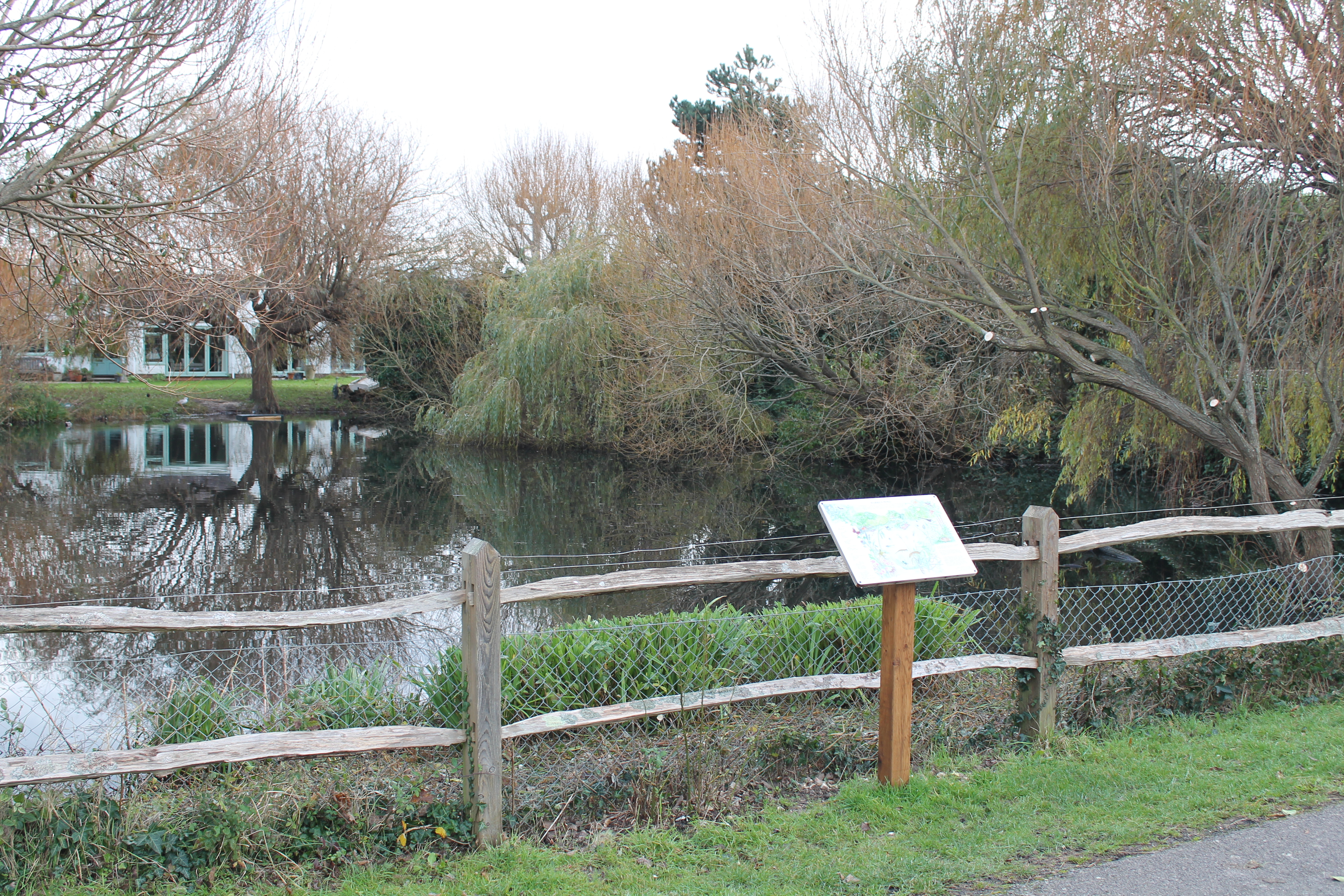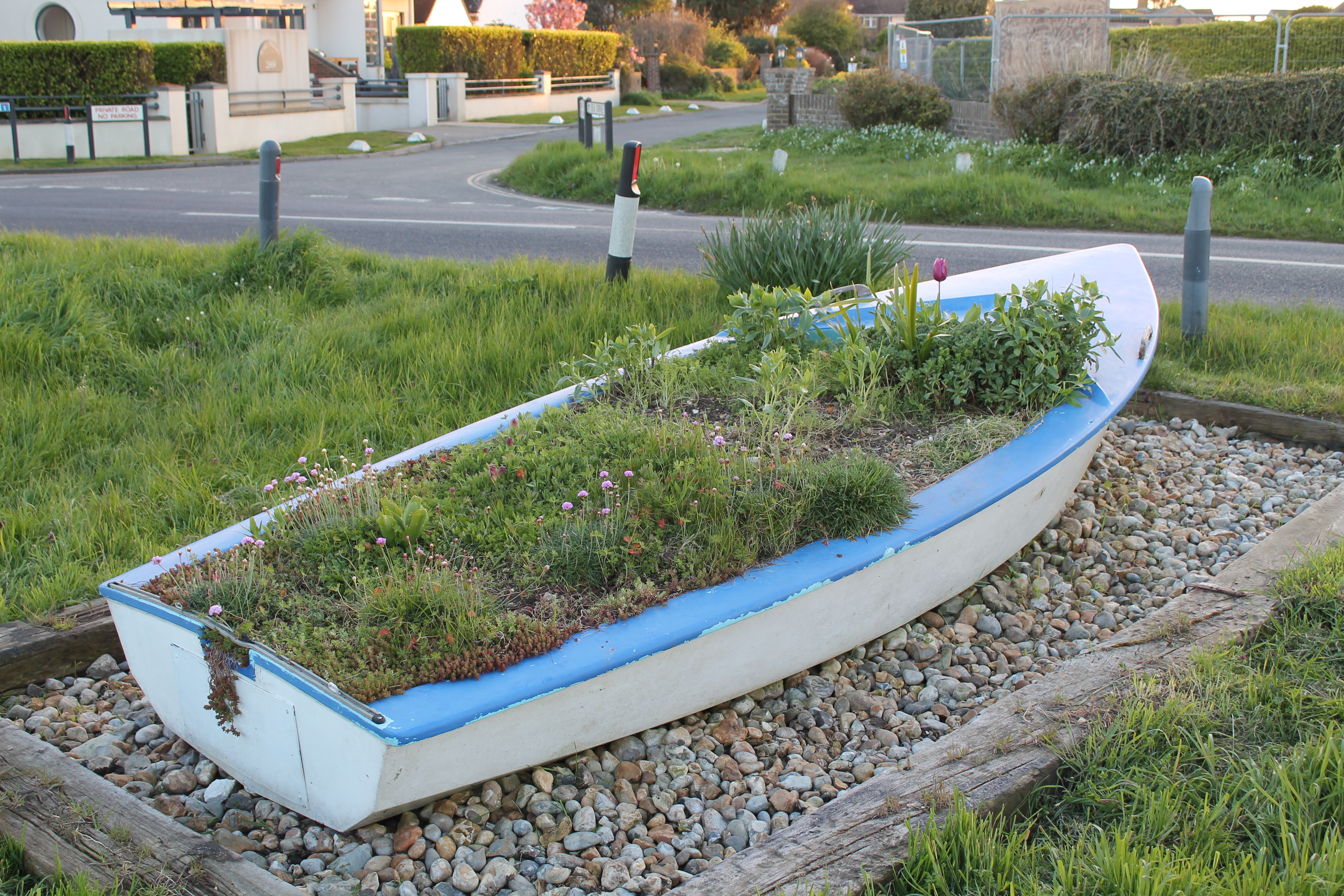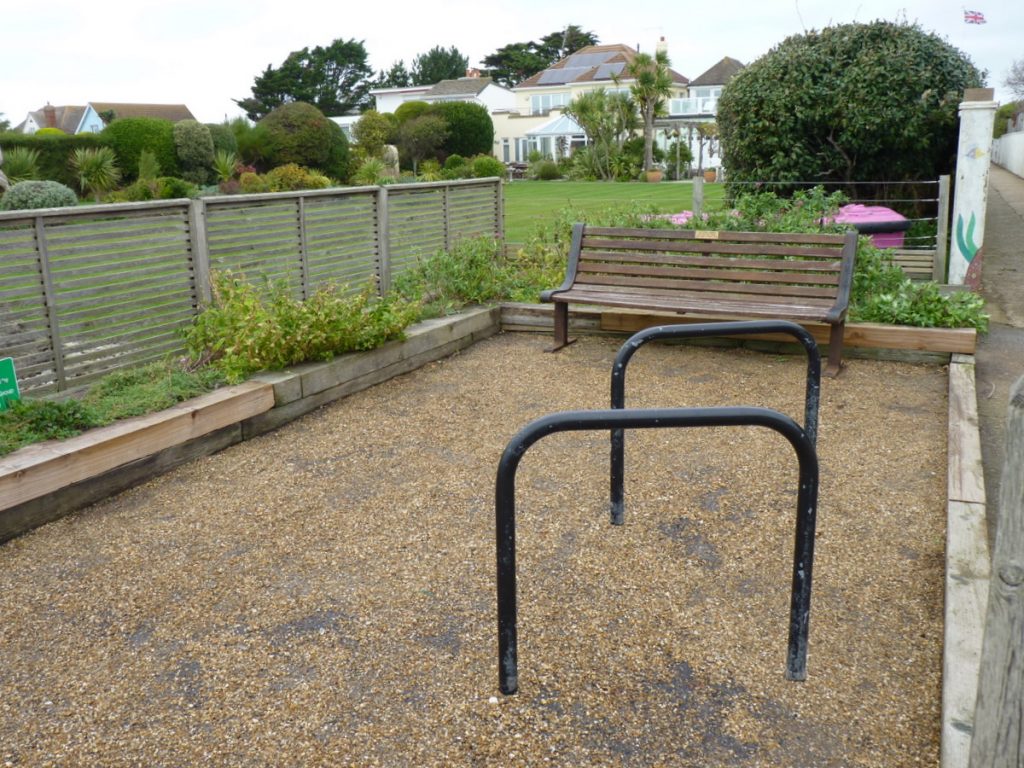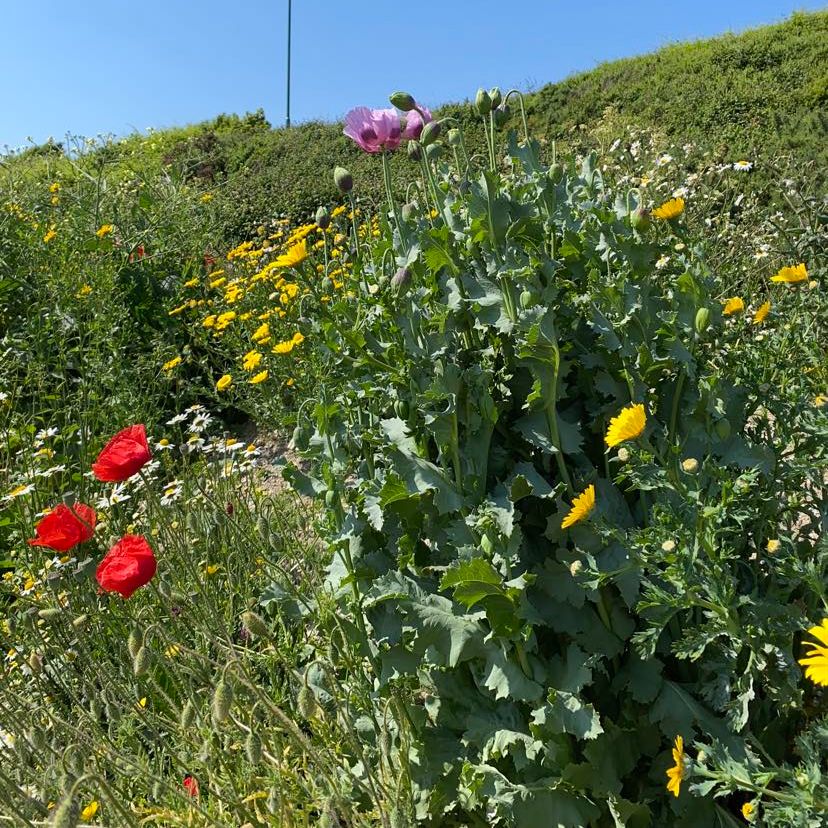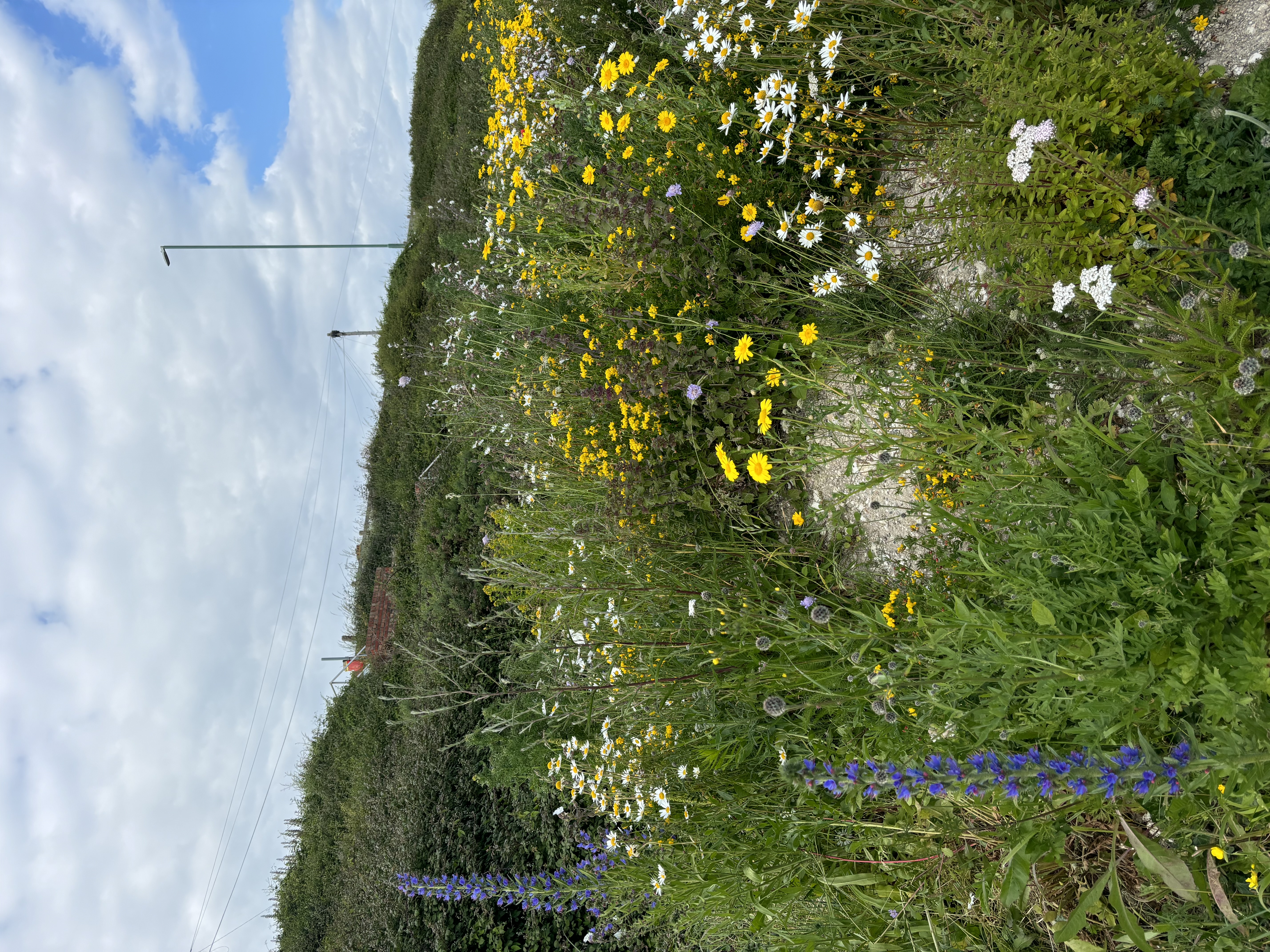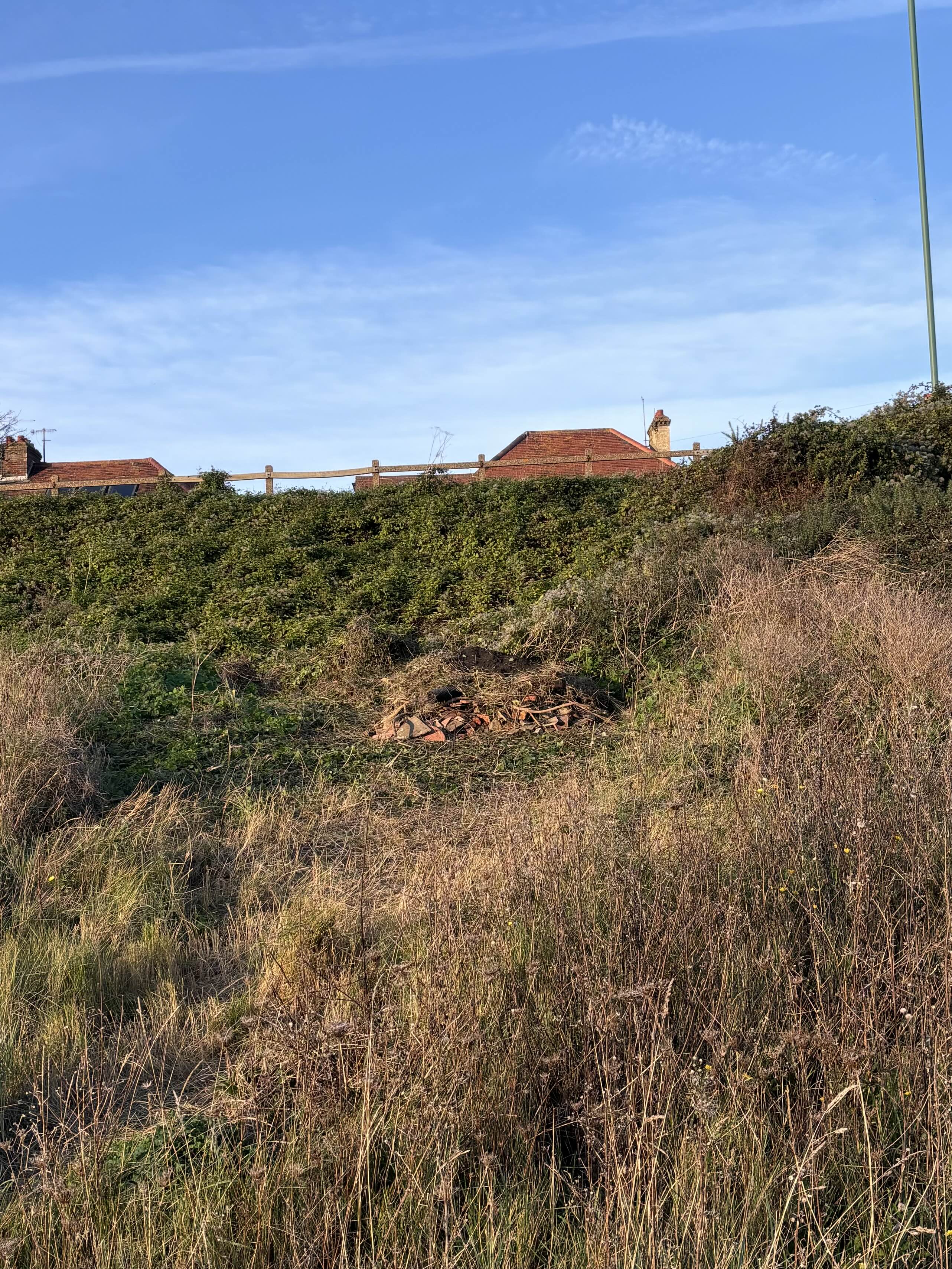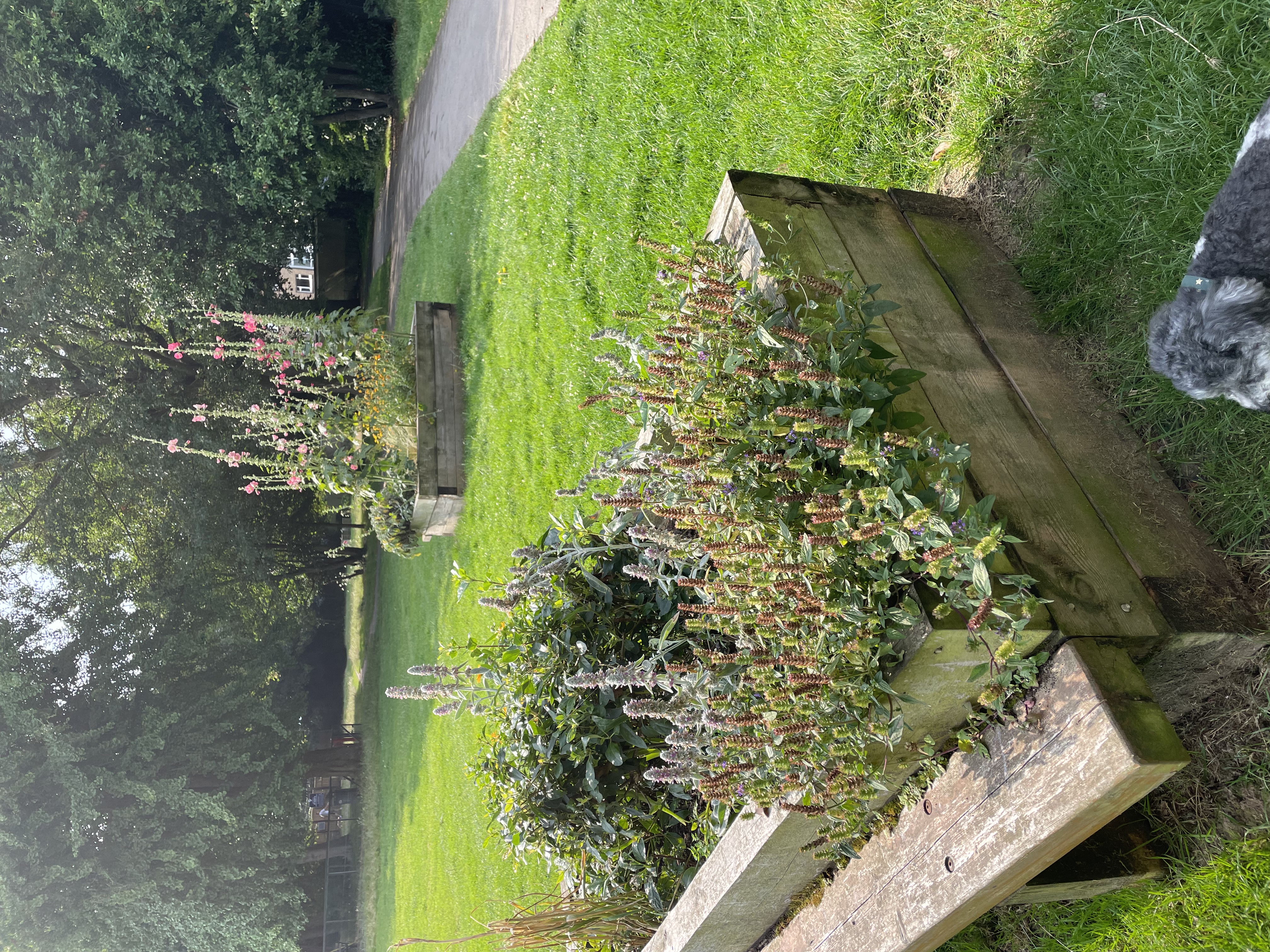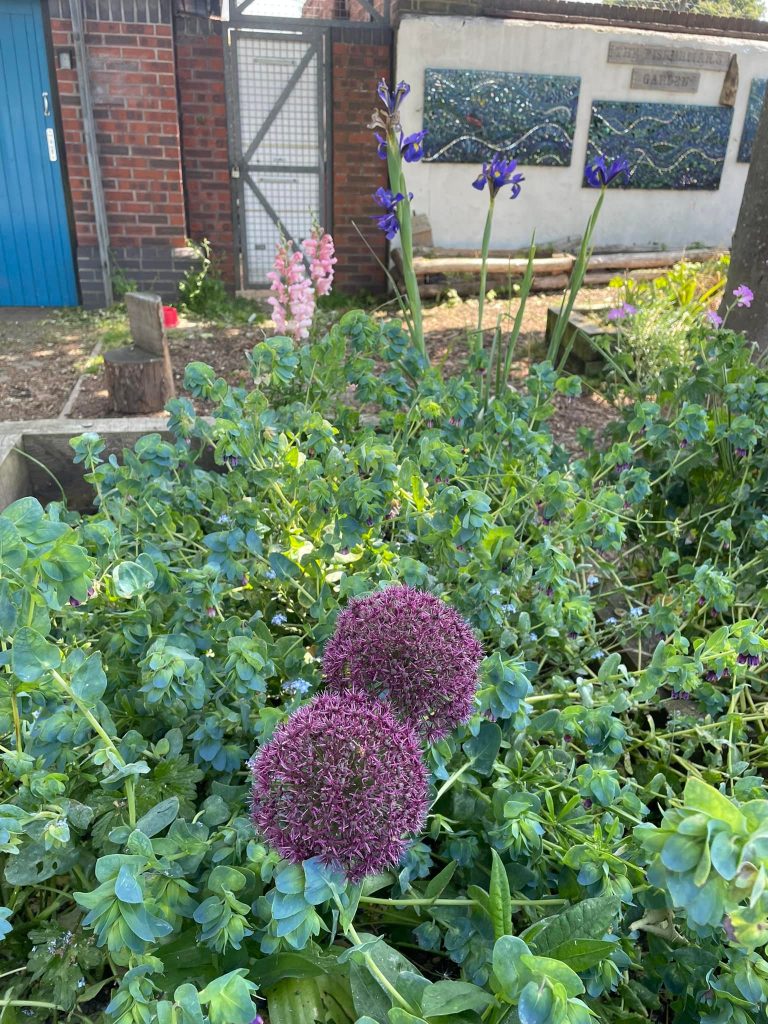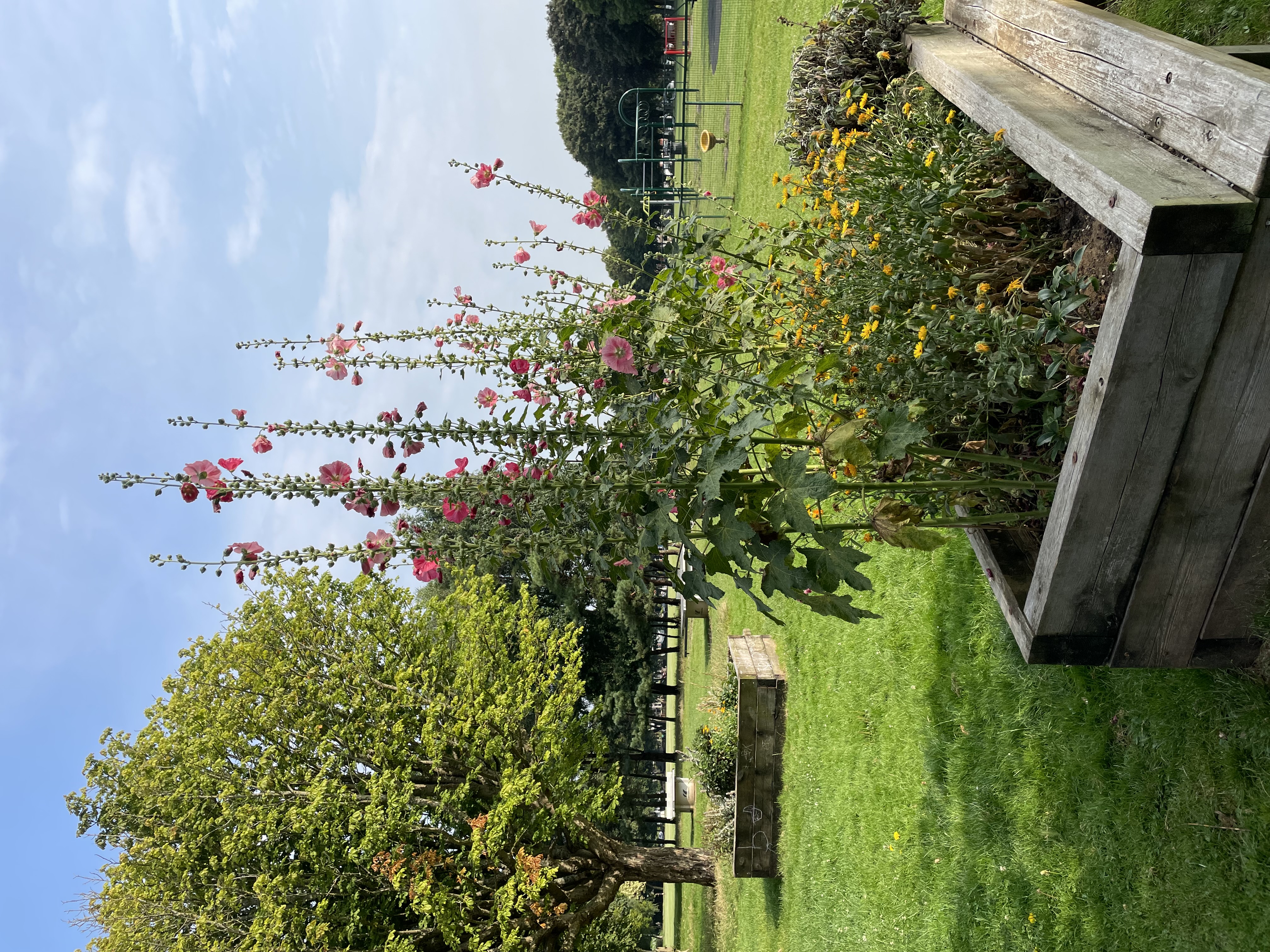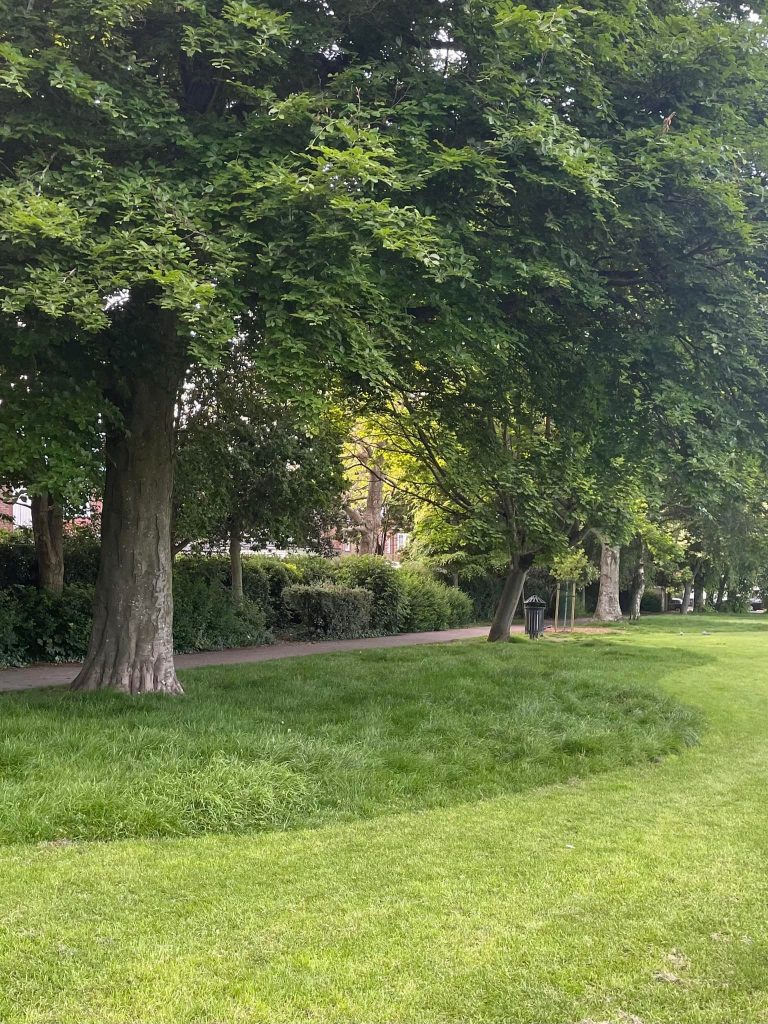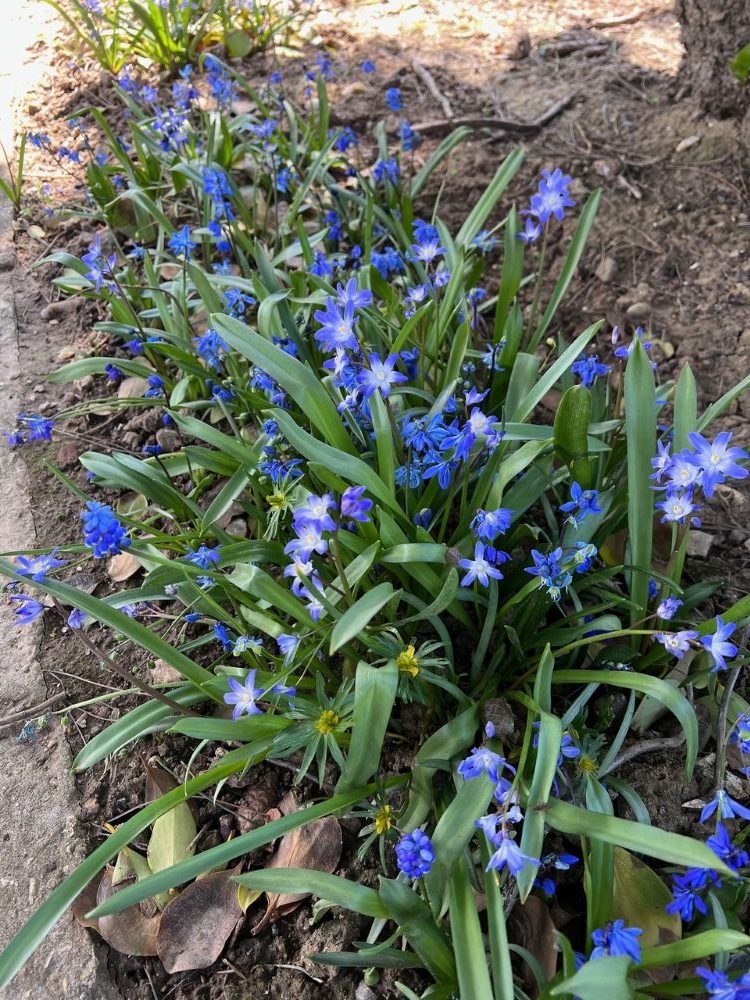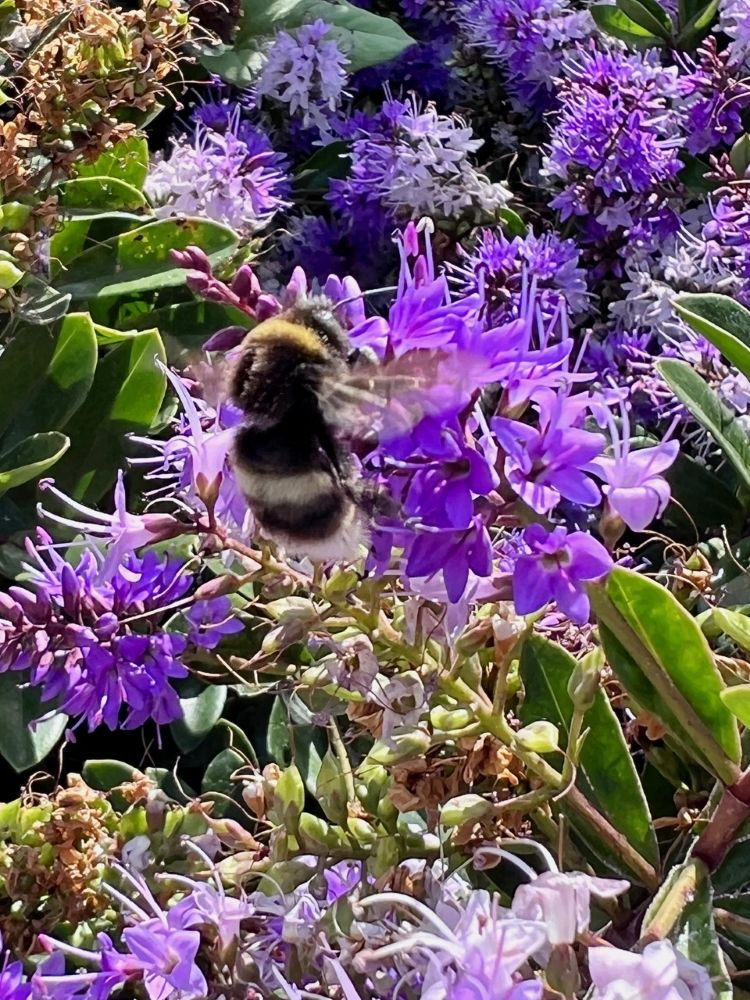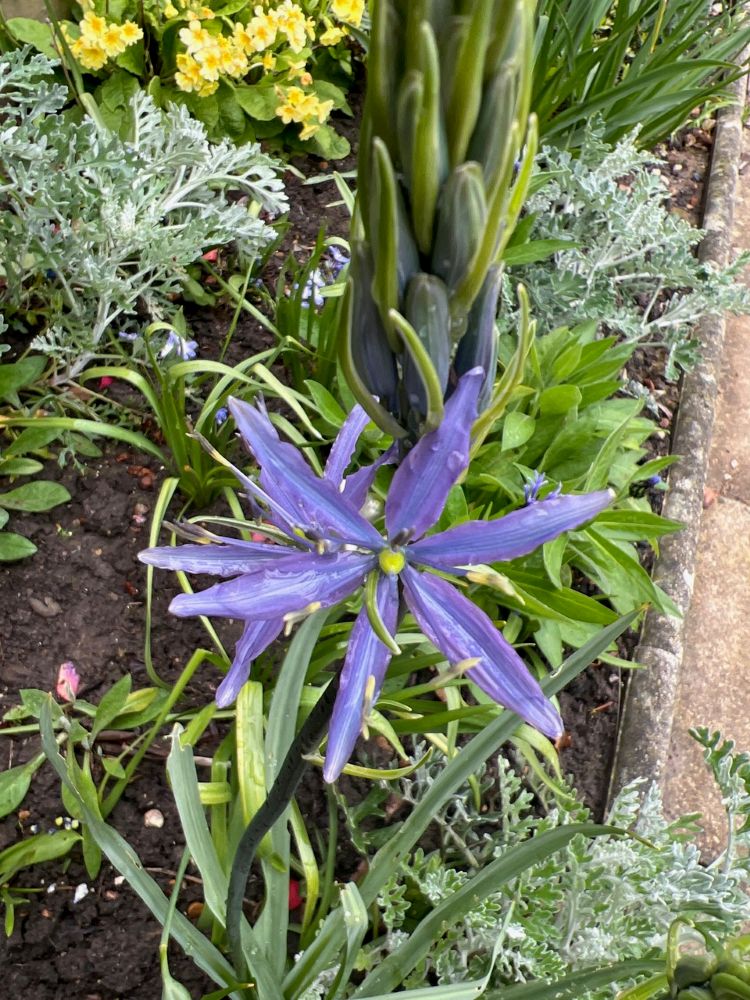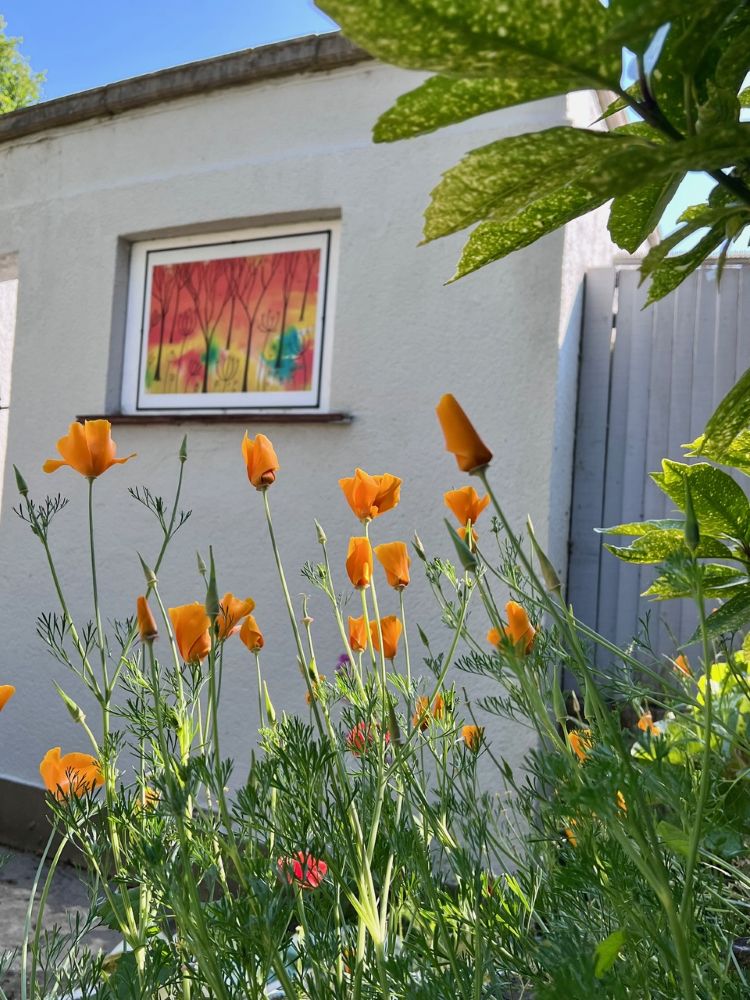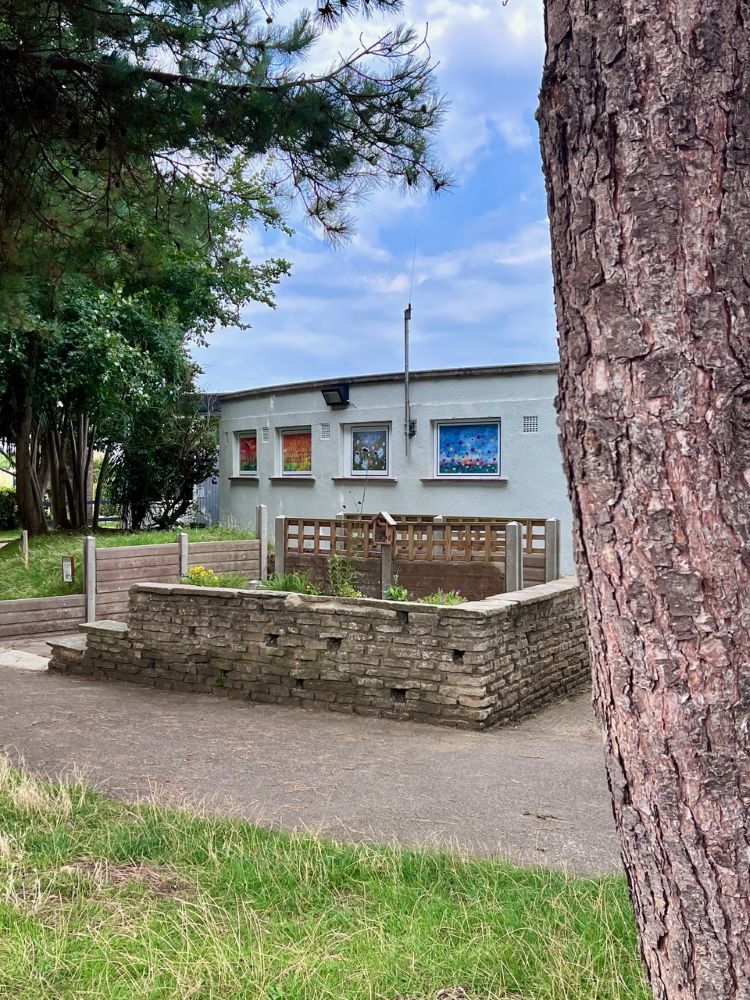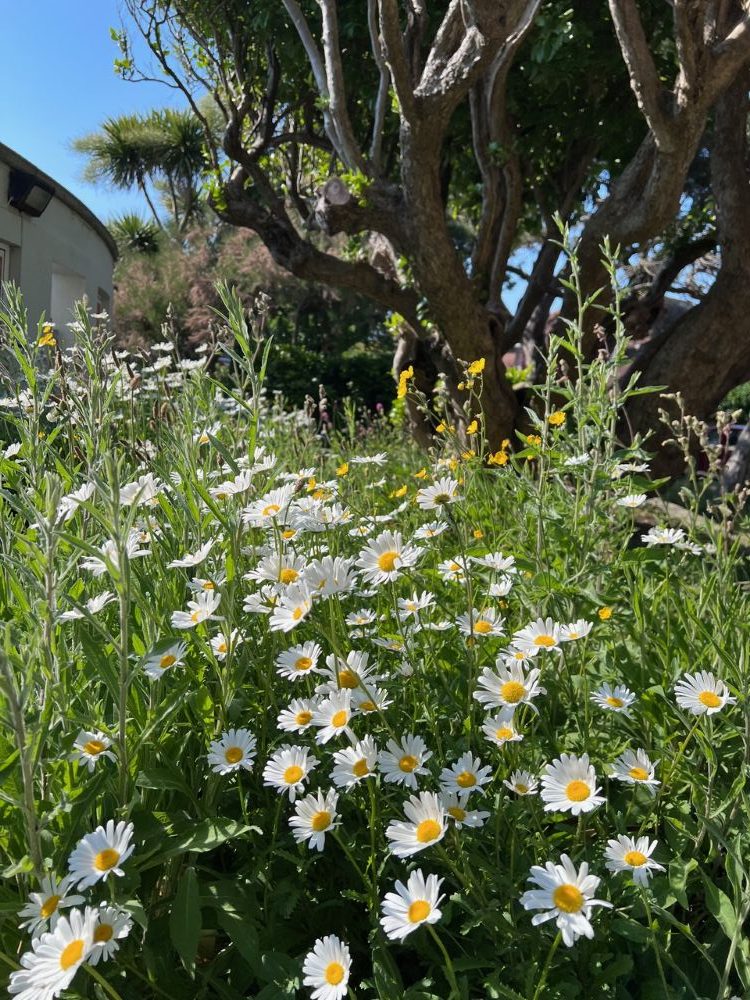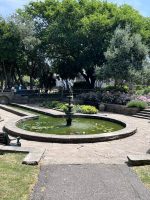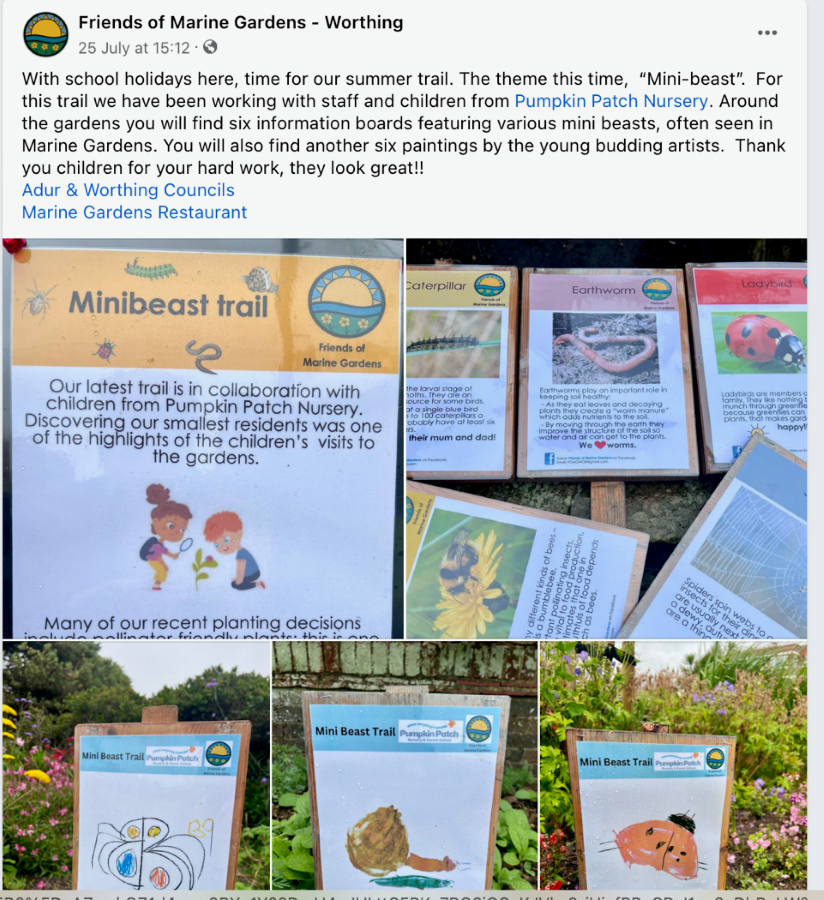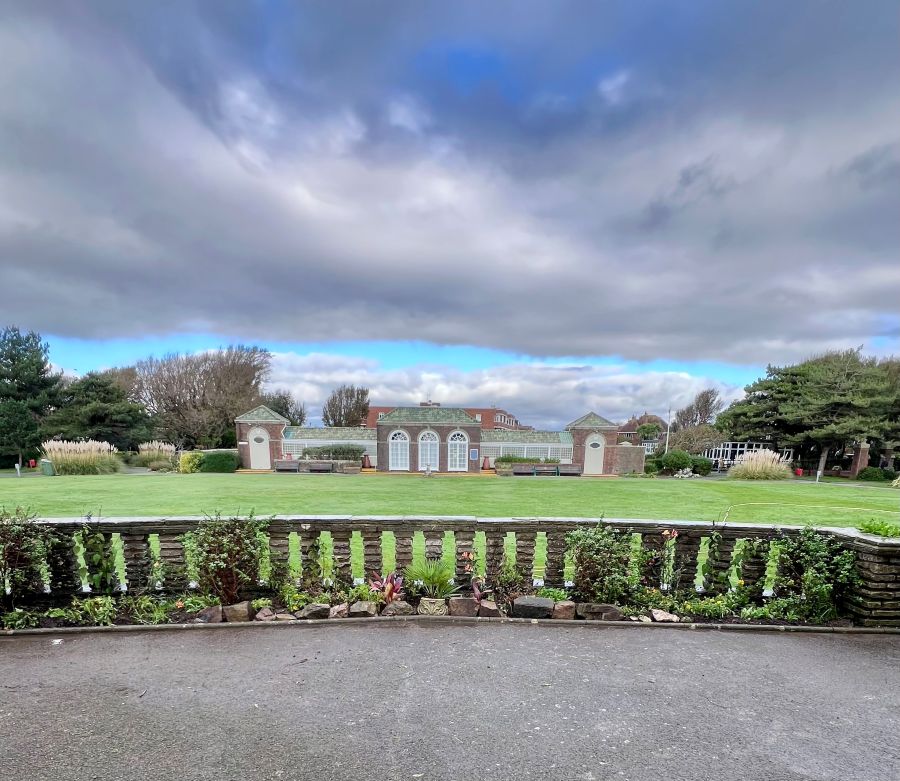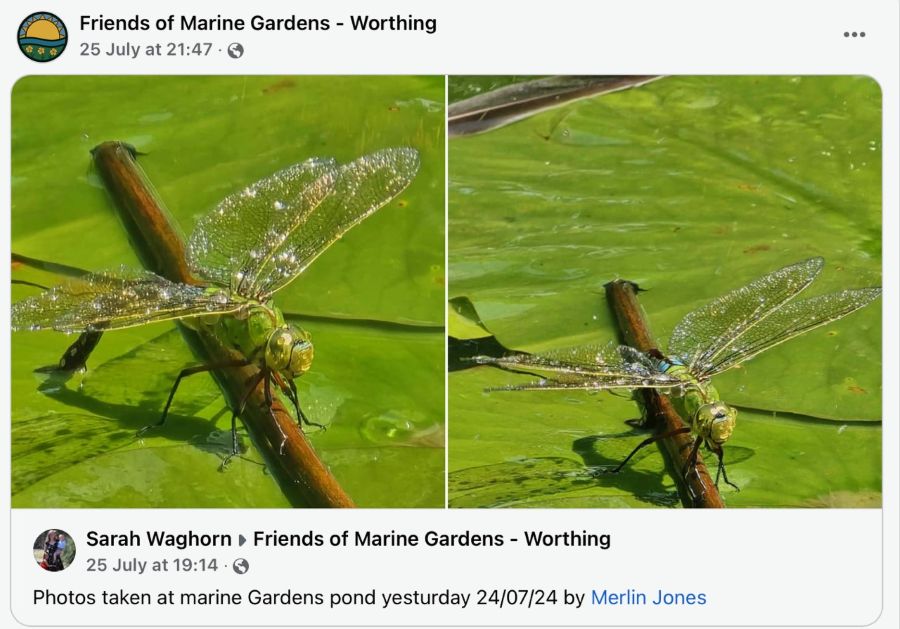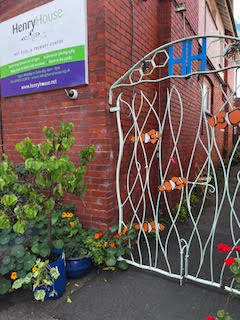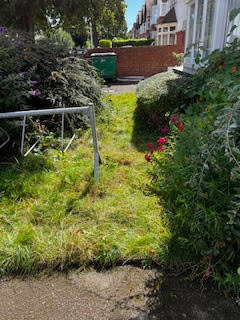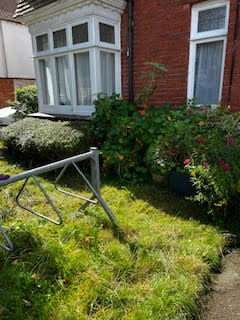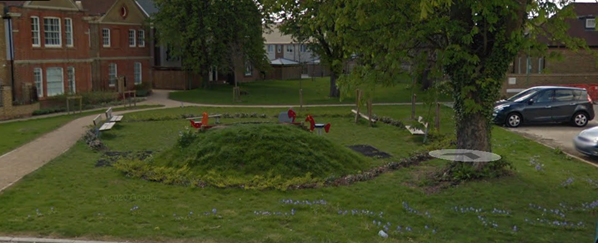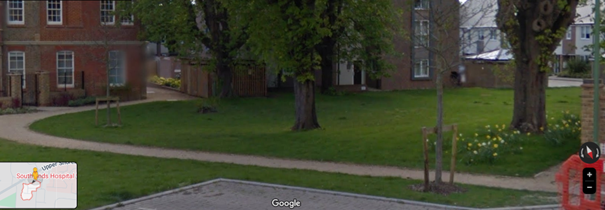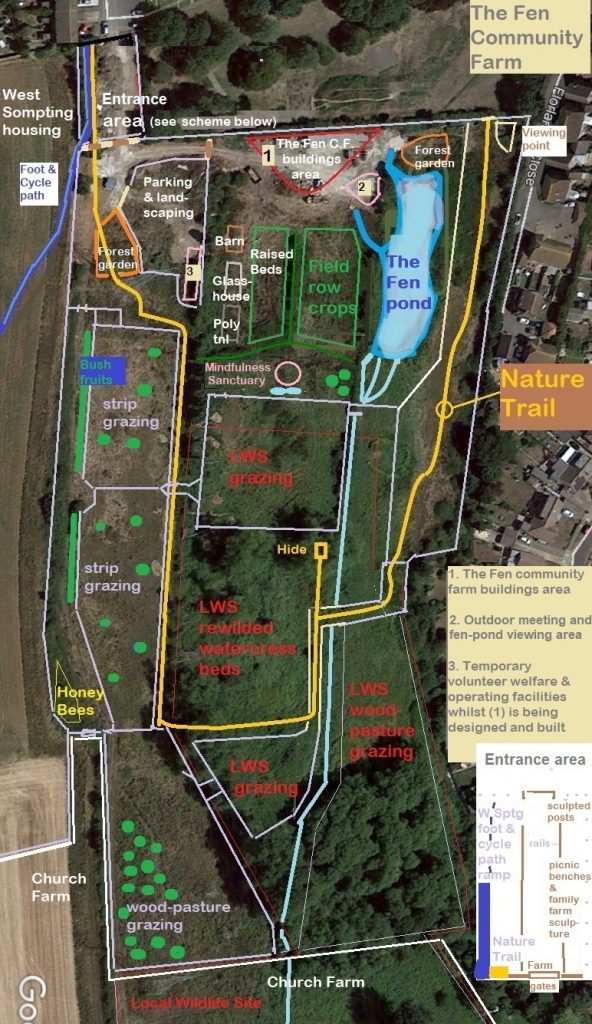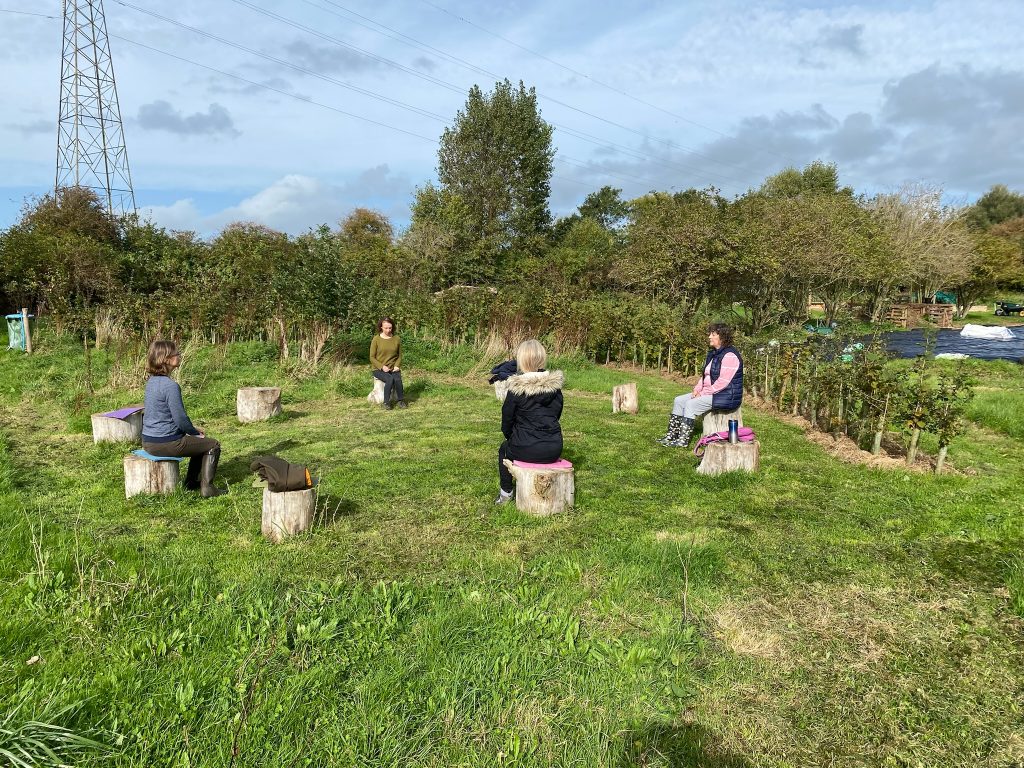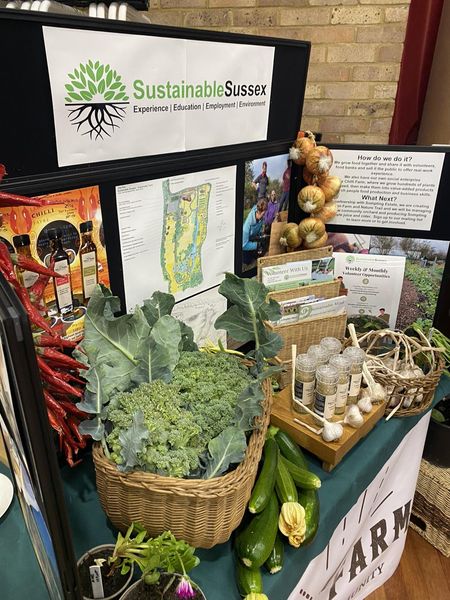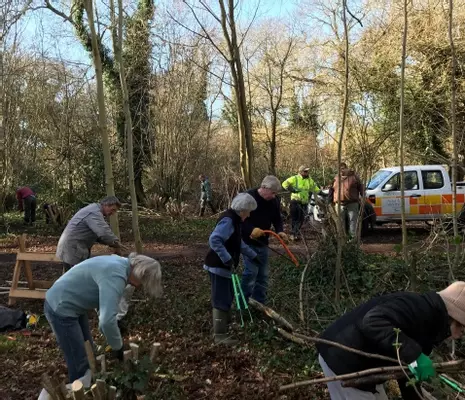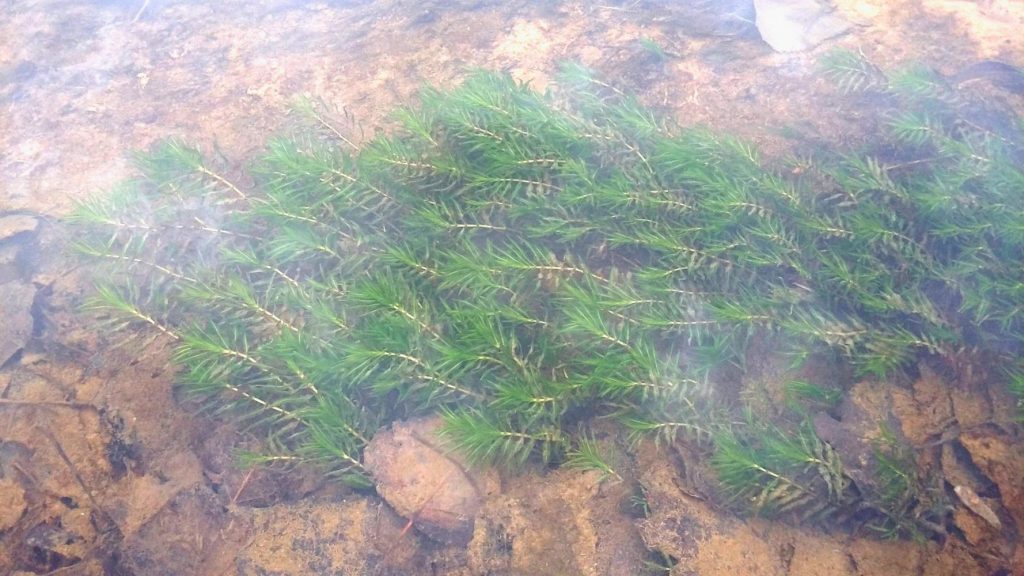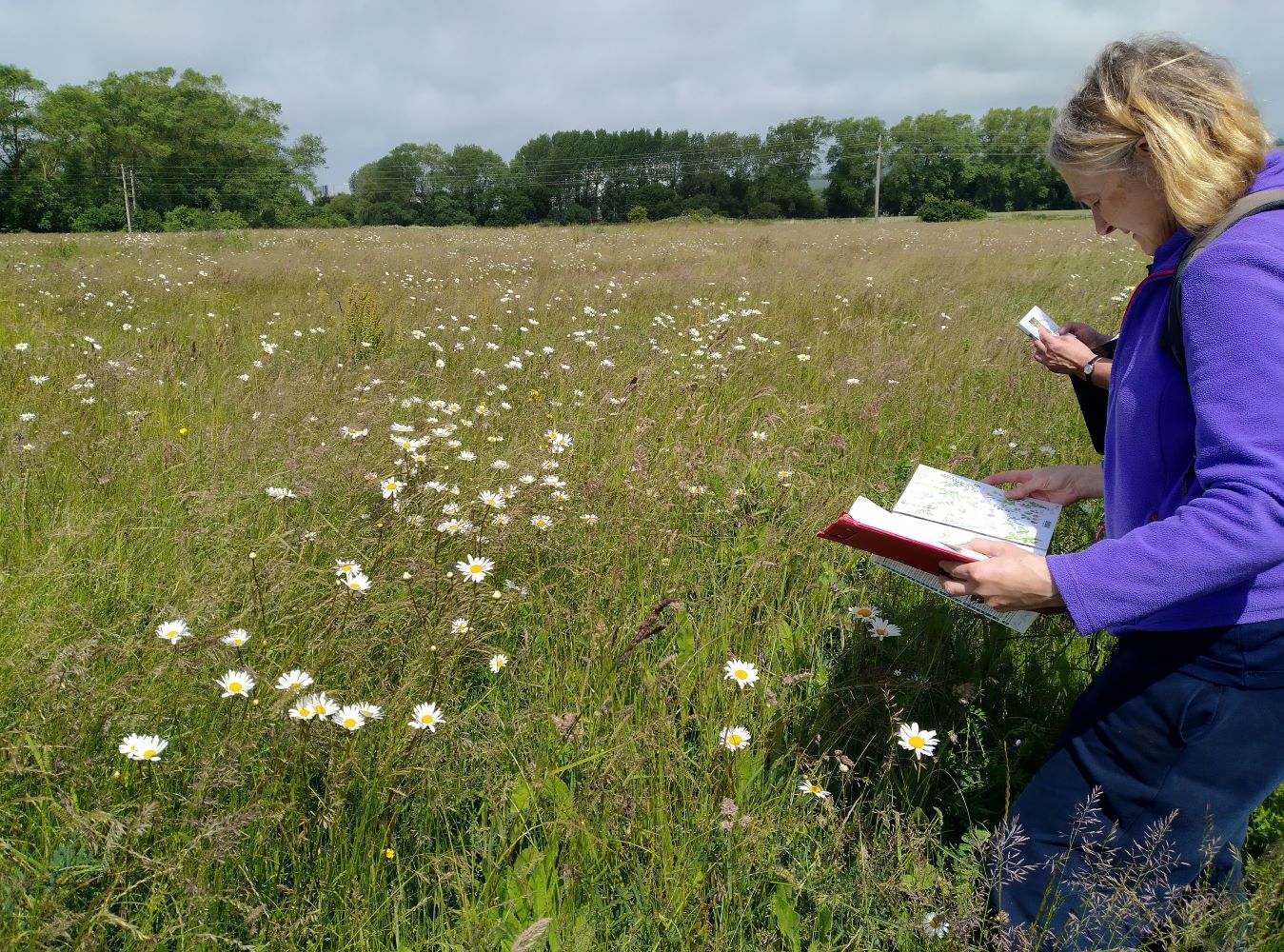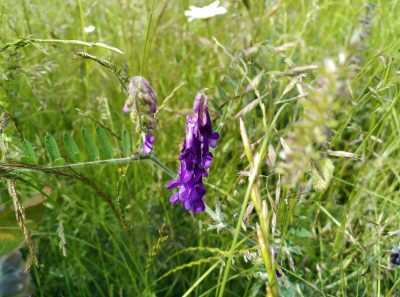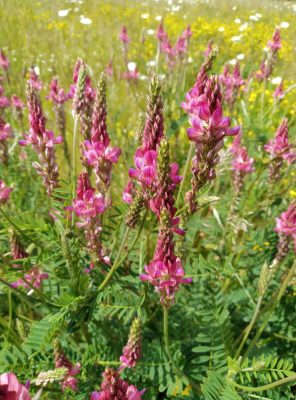Malthouse Meadow Community Forest Garden was established about 6 years ago. The space was semi-wild and presented little community interest apart from dog walkers.
The Friends of Malthouse Meadow was formed by a number of stakeholders, including Sompting Parish Council, Adur District Council and Sompting Estate.
Tremendous progress has been made and the space has been described by a Park Ranger as one of the most environmentally rich spaces in the area. The aim is to develop a space in which the community can harvest fruit and nuts and enjoy a fabulous country experience.
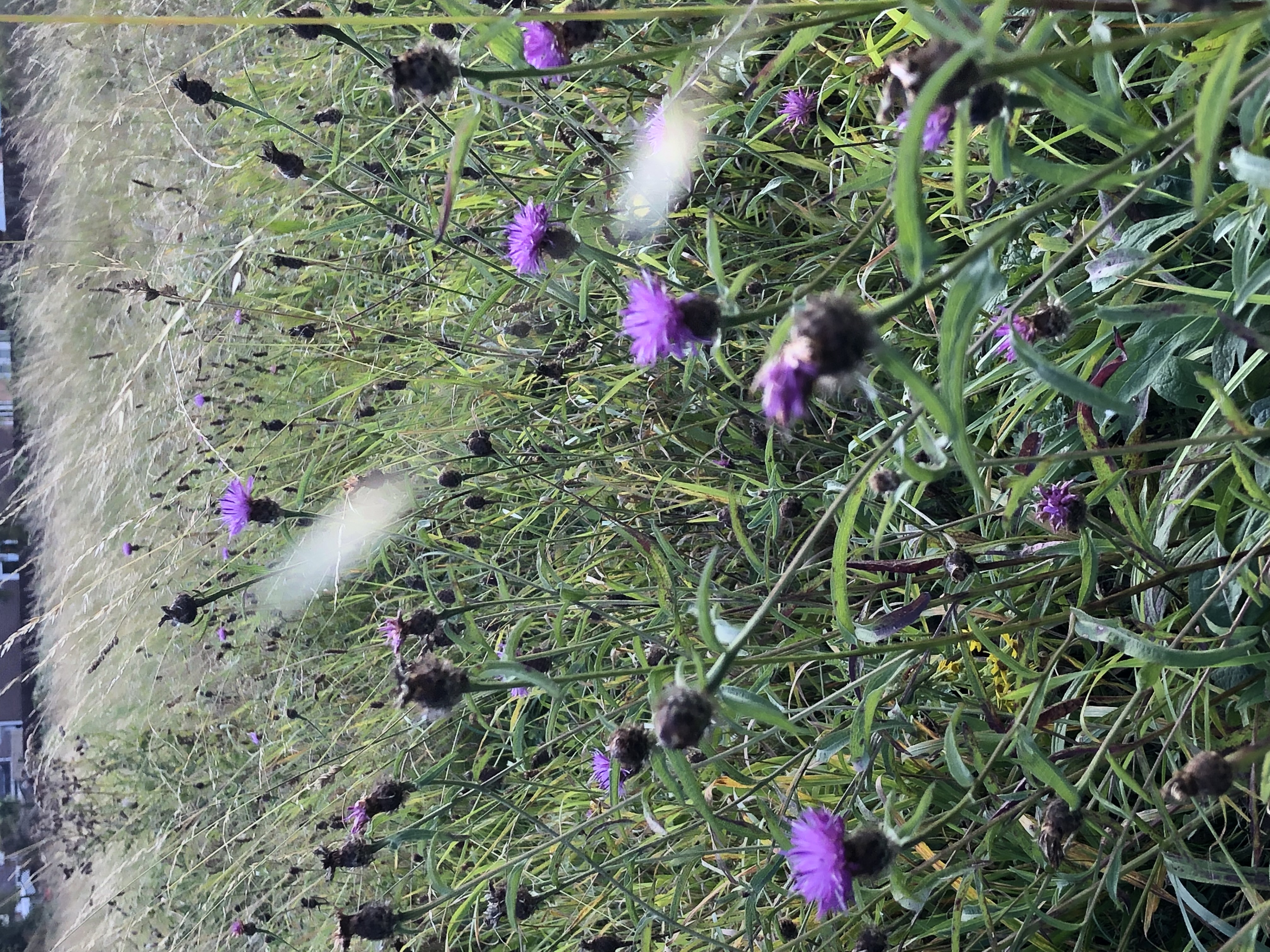
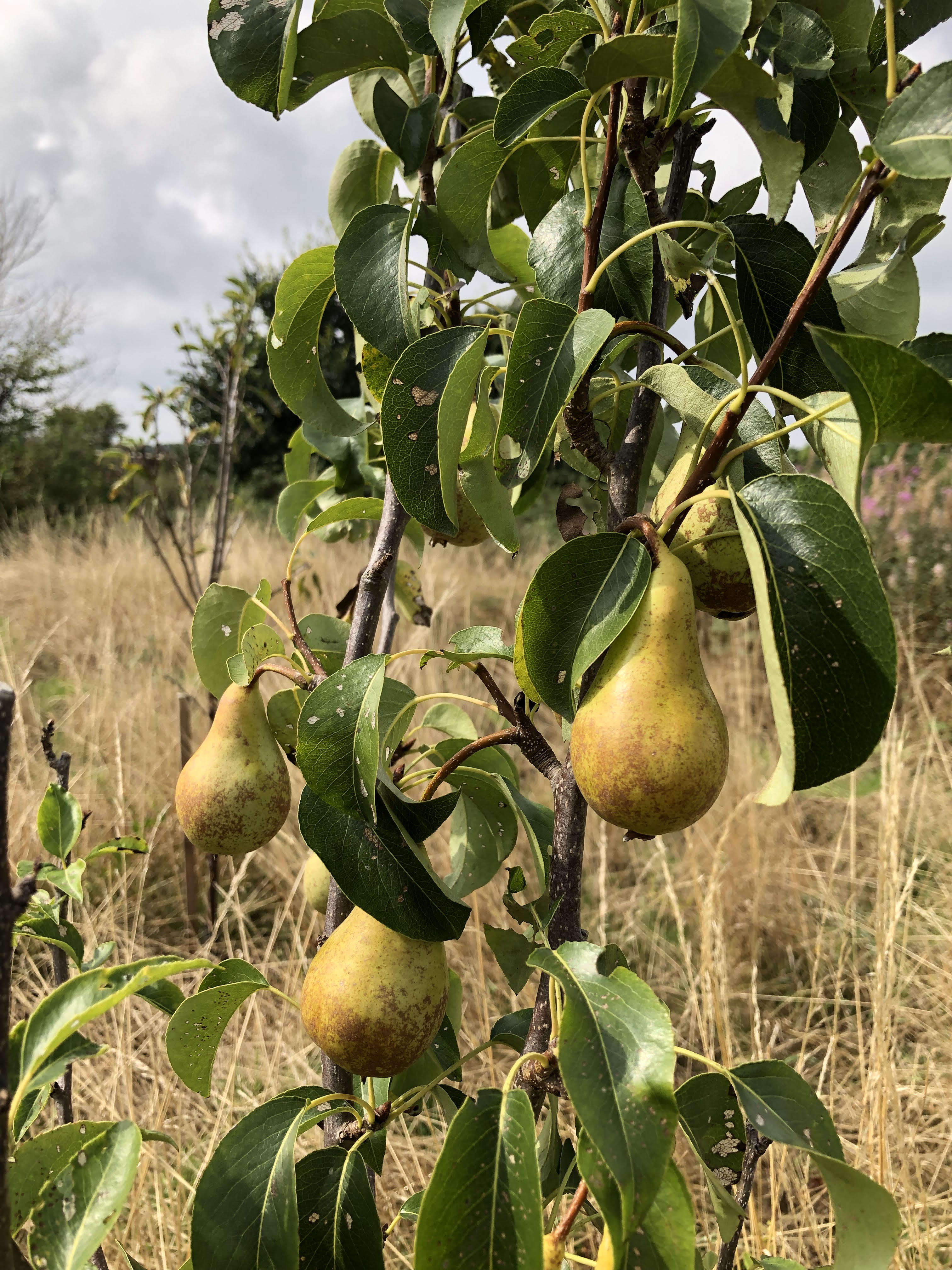
Activities include coppicing of a wooded area, dark skies observatory, wildlife haven (badgers/foxes/birds/insects). Strip grazing, funded partly by Sompting Big Local and our Shepherd Leighton Clay, has improved the quality of the grass in the meadow. It has reduced bramble growth and provided a clear sweep of meadow grass with views of St Mary’s Sompting and Sompting Abbotts.
Events used to take place monthly and have included a butterfly count, bird watching, coppicing, planting, pruning and guided walks. Our aim is to promote involvement with local schools. It is also hoped that young people will become involved via the The Duke of Edinburgh Award Scheme.
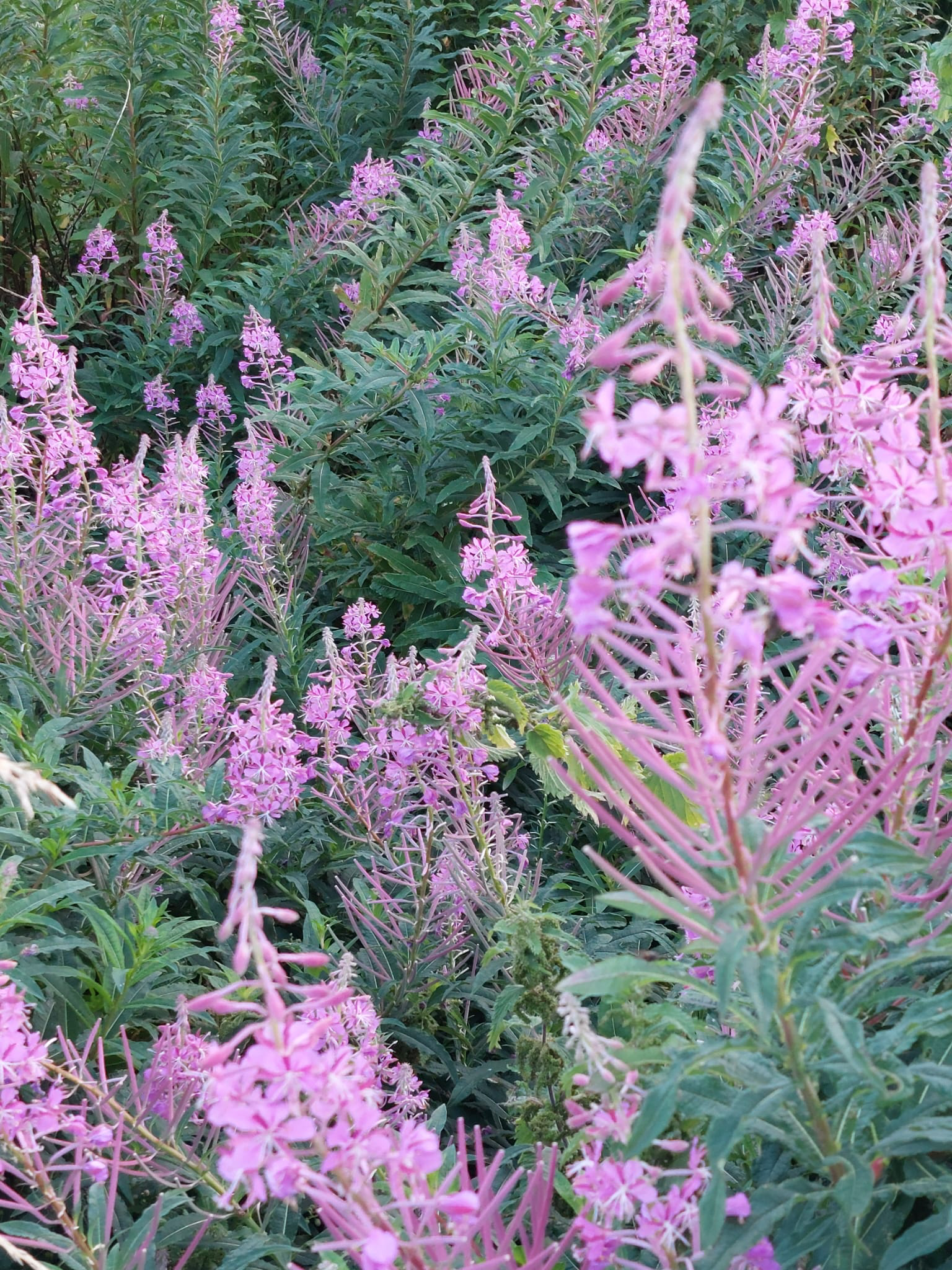
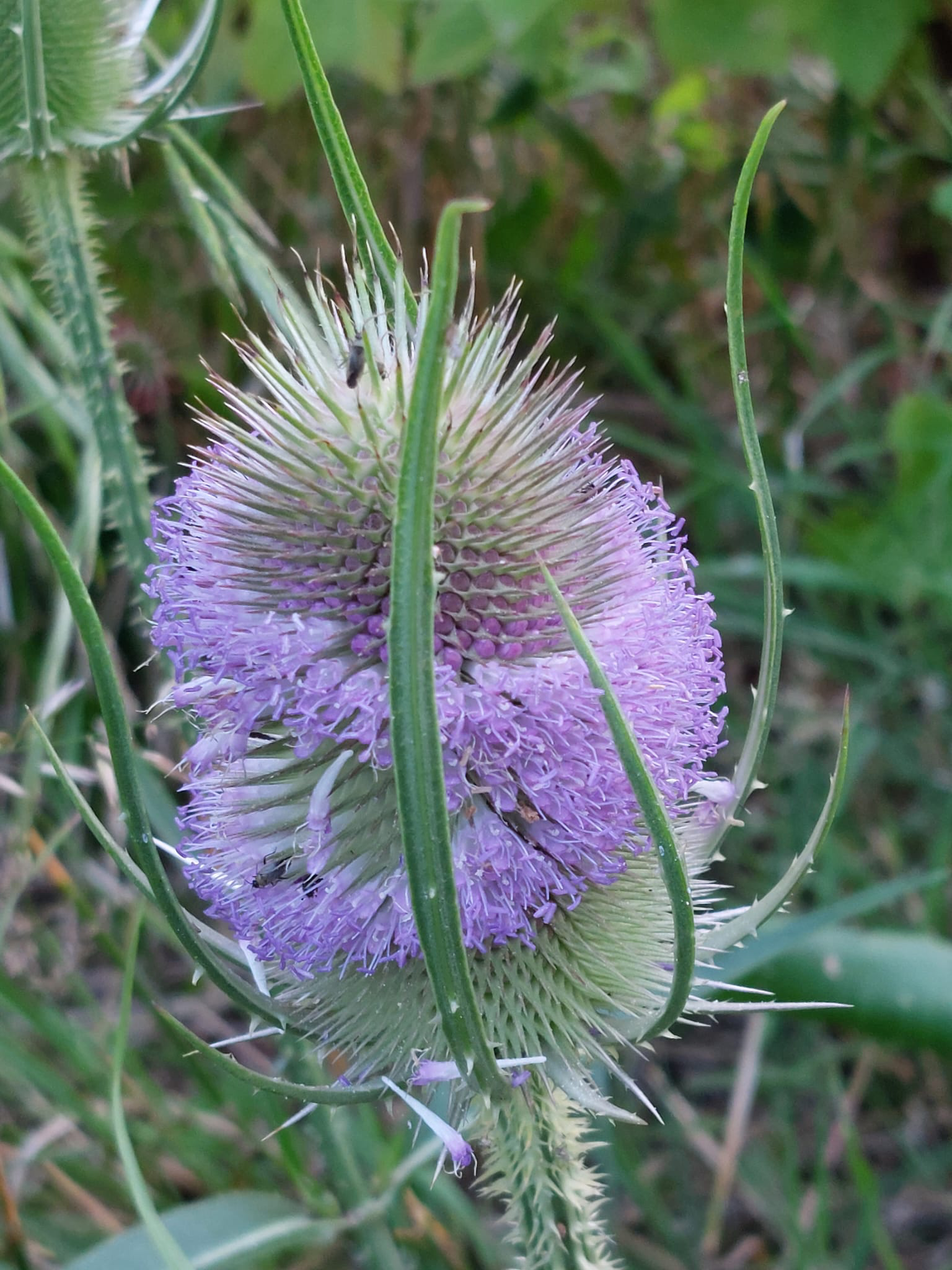
The Project is part of the broader Sompting in the Countryside Initiative and benefits from support from Sompting Estate who regularly donate plants and support the programme of events. Sompting Parish Council have supported the project by funding the purchase of trees and plants.
For more information about volunteering, please email Glynndaviescatherine@gmail.com
